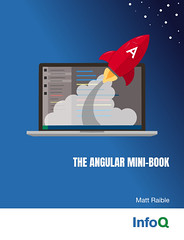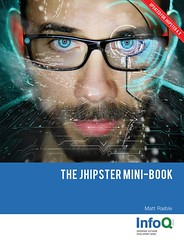If you're not doing anything this Wednesday, you might want to checkout my Introduction to Apache Roller Webinar. It's sponsored by Covalent and has the following agenda:
11:00: Introductions
11:05: What is Apache Roller
11:10: Installing Roller
11:20: Roller Architecture
- 11:25: Blog Customization
- 11:35: Server Customization
11:40: Other Features: Using Weblog Clients and Planet
11:50: Q & A
Heck, even if you are doing something, you should still check it out - especially if you're planning on installing Roller for yourself or for your company. Here's the details and how to signup:
| Cost: | Free! |
| When: | Wednesday, June 20, 2007 |
| Time: | 11:00am PDT (2:00pm EDT) |
| Where: | From the comfort of your home or office |
| Technical Level: | Intermediate Technical Track |
To register, click here and follow the provided steps.
About Covalent and Roller
Covalent recently announced it is offering full commercial support for Apache Roller, the open source blog server from the Apache Software Foundation (ASF). Apache Roller drives the Covalent blog, Sun Microsystem's blogs.sun.com blogging site, IBM DeveloperWorks blogs, the Javalobby's 10,000 user strong JRoller Java community site, and hundreds of other blogs world-wide. Roller is a Java Web application that is run on any Java EE server and any relational database.
<Sidenote/>
I think it's important to point out that JRoller and Roller are not the same thing. JRoller is a service provided by JavaLobby that provides free blogs, whereas Roller is the software that powers it. There's been a lot of negative press about JRoller in recent months and from talking to folks, it sounds like most of it is well-deserved. The service is down a fair amount and when it's up, it's extremely slow.
The good news is these problems should go away in the near future. From Matthew Schmidt in a recent JavaLobby Newsletter:
DZone Network Server Upgrades Coming
Over the weekend, Rick and I started the long and painful process of finally upgrading our three-year-old servers to some hardware that should let us scale and meet the needs of the network for the foreseeable future. With these new servers, comes some upgrades that many of you have been trying to beat into my head for months now, including an upgrade to a recent a version of Roller (powers JRoller) as I can find, and an upgrade to the latest and greatest Codebeamer (powers JavaForge). In addition, there's also going to be a much-needed make over to Javalobby and EclipseZone. Of course, these changes won't happen immediately and we'll be migrating to the new hardware first, but keep your eyes open for some nice updates to nearly all our communities. These upgrades have already started and we'd appreciate any feedback you have on whether things like Javalobby and EclipseZone are working properly. Drop me a line if you notice anything not working properly or feeling slow.
IMO, JavaLobby has been mostly mute about its stance on JRoller, and I've heard from folks there's virtually no support. My guess is this is because they've been concentrating on DZone so much. Maybe they need some volunteers to make JRoller more robust? Or maybe it should be moved to other servers that can make money off the service and re-invest it (like wordpress.com)? Hopefully nothing has to change and JRoller can become a higher priority for JavaLobby in the near future.
Update: The webinar went quite well - thanks to everyone who attended! You can download the PowerPoint (or PDF) and audio from Covalent's Webinars. Also, I mentioned a couple of Dave's presentations in my talk. You can download those by clicking on the links below:
I'm happy to report that after posting The good ol' Job Hunt last week, I had a prosperous week searching for my next gig. I got an offer from a local company in Denver on Tuesday and had 5 interviews on Thursday with various companies. I ended up accepting an offer from LinkedIn for a 3-month contract that starts in a few weeks (thanks for the hookup Brian!).
I also landed a 2-week contract that'll keep me occupied through the end of June. There's a nice week between the two gigs where we're heading to The Cabin for the 4th. I'm currently working on getting an "anchor desk" at the Hive Coorperative, but unfortunately won't be able to use it much in July. I'll be in Mountain View the first couple weeks, followed by Portland (for OSCON) at the end of the month.
Anyone out there interested in a tech meetup in Mountain View in July? My birthday is the 16th - maybe we could meet up around then?
Update: My first day at LinkedIn rocked.







